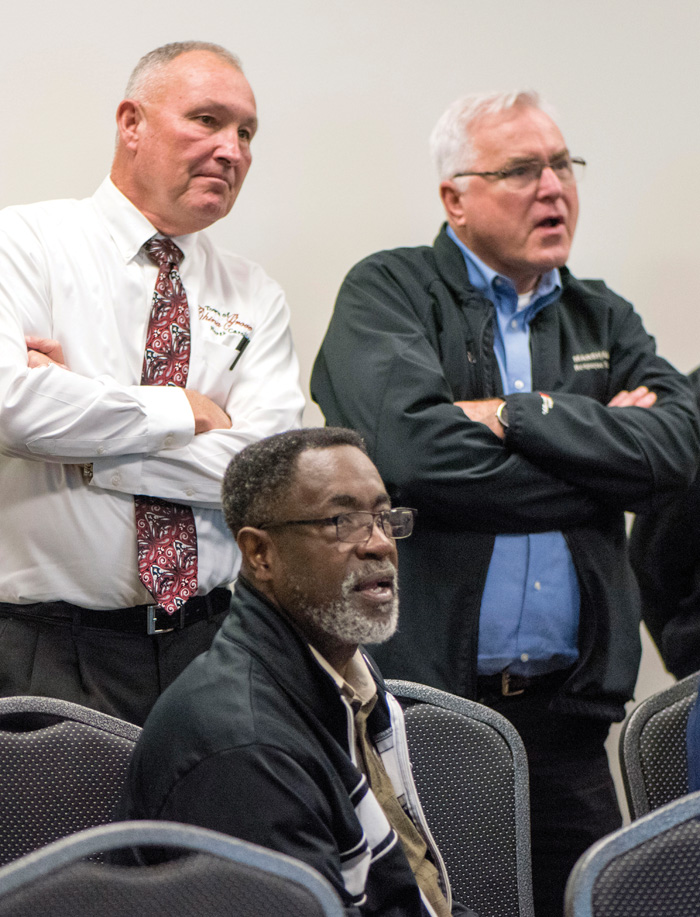Editorial: An election with differences that count
Published 10:40 pm Wednesday, November 8, 2017

- JON C. LAKEY / SALISBURY POST China Grove's Arthur Heggins (front) and Rodney Phillips (back right) and Charles Seaford (right) watch the results of the China Grove election come in at the Board of Elections. Tuesday, November 7, 2017, in Salisbury, N.C.
The results of Tuesday’s municipal elections made history for Rowan County in several ways — ways that reflect our increasingly diverse population and the crumbling of political barriers. In a shift seen across the country, the 2017 election brought historic wins for minority and LGBT candidates
Al Heggins, the first African-American woman to garner the most votes in a Salisbury City Council election, was only one of the victors who broke ground in the city election. Tamara Sheffield’s win is a turning point too. It hasn’t been that long since then-Mayor Paul Woodson refused to sign a proclamation for Gay Pride Week, an observance that Sheffield and others advocated. Now Sheffield is the first openly LGBTQ person to win a seat on City Council.
Also notable is David Post’s strong showing as he garnered nearly as many votes as Heggins. Just as tradition would have Heggins become mayor, Post will likely be mayor pro tem, probably the first person of the Jewish faith to hold that position. Furthermore, with the re-election of Karen Alexander and Brian Miller, the council will have three women and two men — the first time women have held the majority of seats on Salisbury’s council.
Still, the council should have at least one more African-American member to more accurately represent the city’s population. The results tend to reflect who votes, though, not necessarily who lives here.
Spencer and China Grove also elected their first African-American town board members. In fact, Sharon Hovis led the balloting in Spencer, and Arthur Heggins was the second-highest vote-getter in China Grove’s race for three seats.
In none of these cases did candidates run on issues exclusive to their race, sexual orientation or faith. Rather, they’re all people interested in serving their community and making Rowan County a better place to live. They represent everyone, and a majority of voters put trust in them. That is significant.
Unfortunately, it still holds true that only a small portion of voters elect town leaders. Voter participation Tuesday was up only slightly from municipal elections two years ago, going from 5,443 or 15.02 percent in 2015 to 6,260, or 15.76 percent this year. Much work remains to be done when it comes to citizen involvement. The history-making results of Tuesday’s elections should inspire more people to step up.


